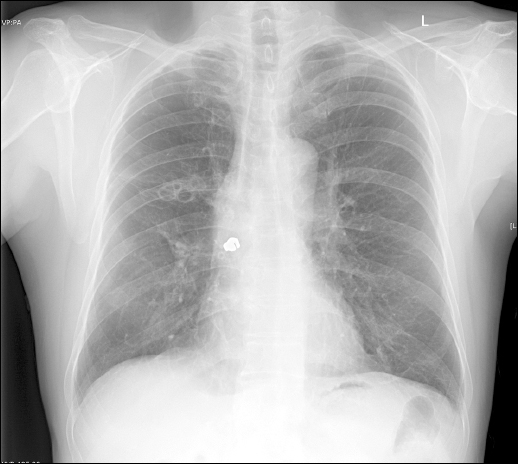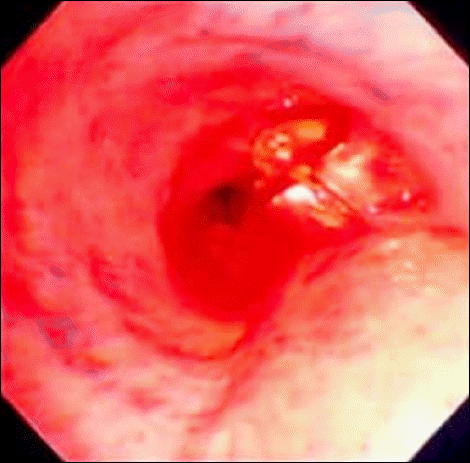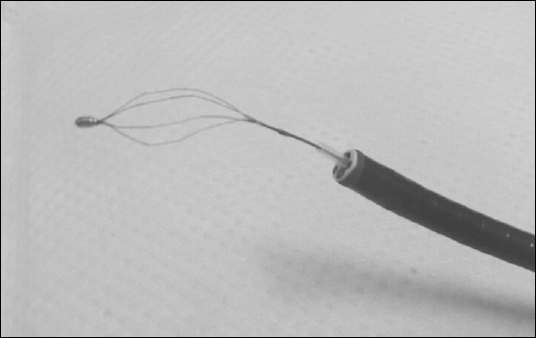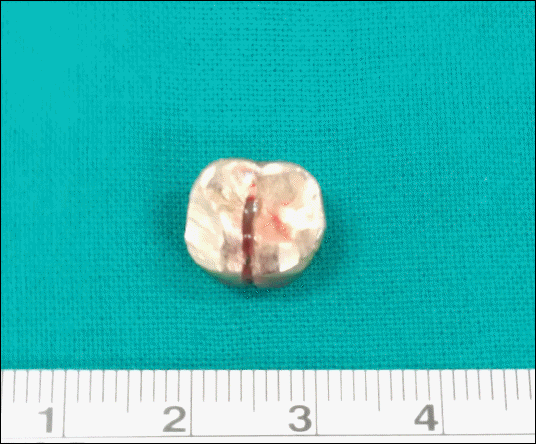Abstract
The daily insertion of endotracheal tubes, laryngeal mask airways, oral/nasal airways, gastric tubes, transesophageal echocardiogram probes, esophageal dilators and emergency airways all involve the risk of airway structure damage. In the closed claims analysis of the American Society of Anesthesiologists, 6% of all claims concerned airway injury. Among the airway injury clams, the most common cause was difficult intubation. Among many other causes, esophageal stethoscope is a relatively noninvasive monitor that provides extremely useful information. Relatively not many side effects that hardly is ratable. Some of that was from tracheal insertion, bronchial insertion resulting in hypoxia, hoarseness due to post cricoids inflammation, misguided surgical dissection of esophagus. Also oropharyngeal bleeding and subsequent anemia probably are possible and rarely pharyngeal/esophageal perforations are also possible because of this device. Careful and gentle procedure is necessary when inserting esophageal stethoscope and observations for injury and bleeding are needed after insertion.
Go to : 
Foreign bodies (FBs) aspiration occurs in adults and elderly patients especially have risk factors [1]. Ramos et al. [2] reported that risk factors were tracheostomy handling, craniocephalic trauma, intravenous drug addiction, dental manipulation, alcoholism, and fiberoptic performance. These patients commonly had unspecific symptoms and radiologic findings. Therefore, total clinical history including medical history, physical examination and image is important in diagnosis of FBs aspiration in adult patients. Flexible bronchoscopy has been demonstrated to be both a safe and effective method to confirm suspected cases of FBs aspiration and to facilitate FBs removal [3]. The type of sedation and anesthesia required to accomplish the procedure is an important aspect. The supraglottic airway device is a simple and useful tool for maintaining airway in adequate sedation and endotracheal tube is not required for passage of the bronchoscope. Many clinical researches reported flexible bronchoscopic approach by a laryngeal mask airway (LMA) in pediatric patients [4,5]. But there are few reports about adult patients using flexible bronchoscope through variable supraglottic airway device. In comparison with other non-intubating LMAs, the I-gel (Intersurgical Ltd, Wokingham, Berkshire, UK) has a shorter and wider stem, allowing unobstructed passage of a bronchoscope or tracheal tube. Therefore, we report a 64-year-old man with a tracheobronchial FB in which attempted to remove with flexible bronchoscopy through an I-gel supraglottic airway.
Go to : 
A 64-year-old man with a past medical history of bronchiectasis for 10 years and hypertension for 6 years presented to out-patient department (OPD) of thoracic surgery due to right flank pain and respiratory discomfort. He experienced productive cough of blood tinged sputum without any other complaint. He revealed that he received dental implant treatment at local dental clinic 2 weeks ago. On arrival to the OPD, all vital signs were stable. However breath sound was decreased in right lower lung. Chest X-ray revealed an irregular shaped radiopaque material in right bronchus intermedius and underlying cystic bronchiectasis in right lung field (Fig. 1). Computerized tomography scan showed about 1.5 cm sized metallic FB at the bifurcation site of right middle and lower lobe bronchus. Flexible bronchoscopic FB removal under general anesthesia was planned. Preoperative laboratory data, including complete blood cell, coagulation test, and renal and liver function test were all within normal limits. Arterial blood gas analysis (room air) showed pH of 7.382, PaO2 of 77.3 mmHg, PaCO2 of 36.0 mmHg, HCO3− of 20.9 mEq/L and SaO2 of 94.9%. Pulmonary function test showed severe obstructive lung defect of FEV1 of 1.13 L (43%) and FEV1/FVC of 33%. After the patient was taken to the operating room, vital sign monitoring was done. Then target controlled infusion was started with propofol and remifentanil, and rocuronium 0.6 mg/kg bolus was injected. Size 4 I-gel was inserted without difficulty and mechanical ventilation with oxygen 100% was done. Position was changed from supine to trendelenburg. Flexible bronchoscope was introduced through the I-gel and advanced into the trachea and right main bronchus with disconnection of mechanical ventilation. FB was located at the right upper lobe bronchial orifice (Fig. 2). After the patient was ventilated until fully oxygenated, flexible bronchoscope was re-inserted. Endobronchial basket was used to grasp the FB (Fig. 3). With the FB grasped by basket, the bronchoscope, and I-gel were extracted en bloc, and then I-gel was reinserted for continuous ventilation. The FB was 1.1 cm sized artificial tooth with crowning material (Fig. 4). Total operation time was 17 minutes. SpO2 was maintained 100% during operation. Salbutamol inhaler was used before and after FB removal for prevention of airway spasm. After infusion of propofol and remifentanil was discontinued and spontaneous respiration was recovered, I-gel was removed. There was no complication during the procedure.
Go to : 
An accidental tracheobronchial FB aspiration is relatively rare in adults than children, but these accidents in both cases result in high morbidity and mortality [6]. If aspirated FB is large enough to cause obstruction of large bronchus or main stream, there will be acute and severe symptoms like stridor, cough, cyanosis, and dyspnea. But in adults, these symptoms occur in only a small percentage of patients [2]. Many of the FBs are located more distally, symptoms are minimal or not present and patients often do not remember the event of chocking or aspiration. Usually FB aspiration is misdiagnosed or undetected for several months, so high risk patients should be taken care for the possibility of FB aspiration. The risk increases in advanced age, neurological disease like Parkinson or Alzheimer, alcohol abuse, and drug history of altering consciousness. The history of dental treatment should be considered because dental prosthetics such as the dental bridge aspirations were reported in many cases [7,8].
The posteroanterior or lateral chest radiography is commonly performed in patients with suspected FB aspiration. The inspiratory, expiratory views of chest radiography and lateral neck radiography may help to diagnose FB aspiration [6]. Metallic FBs are easily identified with accuracy, but when the FB is not radiopaque, radiologic abnormalities including atelectasis, pneumonitis, air trapping, or mediastinal shift may suggest FB aspiration [2]. Natural teeth can be seen on radiologic findings, artificial ones and dental plates are sometimes made of radiopaque substances. The sensitivity and specificity of radiographic studies in the diagnosis range from 68 to 73% and 45 to 67% [9]. In up to 40% of patients with suspected FB aspirations, the chest radiography is normal [6]. Therefore diagnosis of FB aspiration should be considered the entire clinical scenario including patient’s age and medical history, physical examination findings, and imaging results.
The FBs removal traditionally has been done with rigid bronchoscope, particularly in pediatric patients. However, the versatility of flexible bronchoscope has been used increasingly in the treatment of FBs aspiration in adults [6]. Skoulakis et al. [10] stated the flexible fiberoptic instruments may cause dangerous consequence such as displacement of the FB to a difficult to access position, fragmentation of FBs or provocation of poor ventilation and heart attack. Though in recent, accumulated evidence suggests the flexible bronchoscopy is a safe procedure with good success rate in both adult and pediatric patients. As first step, it is important to consider how secure the airway. If a patient is in severe respiratory depression, the rigid bronchoscope is treatment of choice. If a patient is stable, the type of sedation should be considered to accomplish the procedure. Most of pediatric patients, general anesthesia with IV anesthetics is preferred. In adults, conscious sedation is possible when the procedure is performed with the flexible bronchoscope. However the conscious sedation in elderly patients with respiratory depression has a risk, so these patients and pediatric patients need decision whether or not to use endotracheal tube or other airway device. The supraglottic airway devices are more easily inserted than endotracheal tube and have a larger diameter compared with an endotracheal tube. Therefore there are many studies using LMA with flexible bronchoscope for tracheobronchial FB removal [4,6]. In comparison with other non-intubating LMAs, I-gel has a shorter (22 vs. 20 cm in length) and wider stem (12 vs. 13 mm in internal diameter), allowing unobstructed passage of a bronchoscope or endotracheal tube.
I-gel airway is a novel supraglottic device made up of a thermoplastic elastomer with a soft durometer and gel like feel. It is designed as a single patient use and featuring an additional tube for fitting a gastric suction catheter without an inflatable cuff. Mechanically inflation can cause movement of the device because the distal wedge shape of the mask is forced out of the upper esophagus [11]. It also can cause tissue compression, venous compression and nerve injury. Janakiraman et al. [12] studied success rate of insertion, ease of insertion, and leak pressure and fiberoptic position of LMA and I-gel supraglottic pathway in 50 adult patients. Airway seal was better with the I-gel than the LMA, this is due to the fit between the oval-shaped groove surrounding the glottis and the oval-shaped cuff of the LMA. I-gel is designed anatomically to fit the peri-laryngeal and hypo-pharyngeal structures without the use of inflatable cuff. The vocal cord view through fiberoptic bronchoscope was better in the I-gel airway. Inflation of the cuff with the LMA could displace the mask as the distal wedge of the mask was forced out of the upper esophagus, but in this circumstance, LMA still functioned well despite a poor view of the vocal cord. Some studies concluded I-gel could be used like the LMA and otherwise even provide better conditions for fiberoptic manipulations [11,12].
In conclusion, we safely performed flexible bronchoscope guided FB removal through I-gel supraglottic airway. I-gel has larger diameter than endotracheal tube and provides better fiberoptic vocal cord view than the LMA. Since I-gel also allows more convenient manipulation of bronchoscope, the procedure could be performed more easily and less irritably than endotracheal intubation or LMA insertion. Therefore we believe that flexible bronchoscope guided FB removal through I-gel supraglottic airway is optimal management, especially in patients who required conscious sedation to deep sedation.
Go to : 
REFERENCES
1. Park SK, Cho EJ. Pneumonia from pulmonary aspiration of an antihypertensive anesthetic premedication. Anesth Pain Med. 2011; 6:402–5.
2. Ramos MB, Fernández-Villar A, Rivo JE, Leiro V, García-Fontán E, Botana MI, et al. Extraction of airway foreign bodies in adults: experience from 1987–2008. Interact Cardiovasc Thorac Surg. 2009; 9:402–5. DOI: 10.1510/icvts.2009.207332. PMID: 19491125.

3. Huang PM, Kao MW. Endobronchial foreign body removed by flexible bronchoscopy using the trendelenburg position. Thorac Cardiovasc Surg. 2012; 60:545–7. PMID: 22207366.

4. Nussbaum E, Zagnoev M. Pediatric fiberoptic bronchoscopy with a laryngeal mask airway. Chest. 2001; 120:614–6. DOI: 10.1378/chest.120.2.614. PMID: 11502667.

5. Swanson KL, Prakash UB, Midthun DE, Edell ES, Utz JP, McDougall JC, et al. Flexible bronchoscopic management of airway foreign bodies in children. Chest. 2002; 121:1695–700. DOI: 10.1378/chest.121.5.1695. PMID: 12006464.

6. Swanson KL. Airway foreign bodies: what’s new? Semin Respir Crit Care Med. 2004; 25:405–11. DOI: 10.1055/s-2004-832713. PMID: 16088484.
7. Dhanrajani PJ, Swaify GA. Aspiration of a bridge and a tooth. J Craniomaxillofac Surg. 1992; 20:91–2. DOI: 10.1016/S1010-5182(05)80474-3.

8. Knowles JE. Inhalation of dental plates—a hazard of radiolucent materials. J Laryngol Otol. 1991; 105:681–2. DOI: 10.1017/S0022215100117025. PMID: 1919331.

9. Svedström E, Puhakka H, Kero P. How accurate is chest radiography in the diagnosis of tracheobronchial foreign bodies in children? Pediatr Radiol. 1989; 19:520–2. DOI: 10.1007/BF02389562. PMID: 2797935.

10. Skoulakis CE, Doxas PG, Papadakis CE, Proimos E, Christodoulou P, Bizakis JG, et al. Bronchoscopy for foreign body removal in children. A review and analysis of 210 cases. Int J Pediatr Otorhinolaryngol. 2000; 53:143–8. DOI: 10.1016/S0165-5876(00)00324-4.

11. Levitan RM, Kinkle WC. Initial anatomic investigations of the I-gel airway: a novel supraglottic airway without inflatable cuff. Anaesthesia. 2005; 60:1022–6. DOI: 10.1111/j.1365-2044.2005.04258.x. PMID: 16179048.

12. Janakiraman C, Chethan DB, Wilkes AR, Stacey MR, Goodwin N. A randomised crossover trial comparing the i-gel supraglottic airway and classic laryngeal mask airway. Anaesthesia. 2009; 64:674–8. DOI: 10.1111/j.1365-2044.2009.05898.x. PMID: 19453322.

Go to : 




 PDF
PDF Citation
Citation Print
Print






 XML Download
XML Download